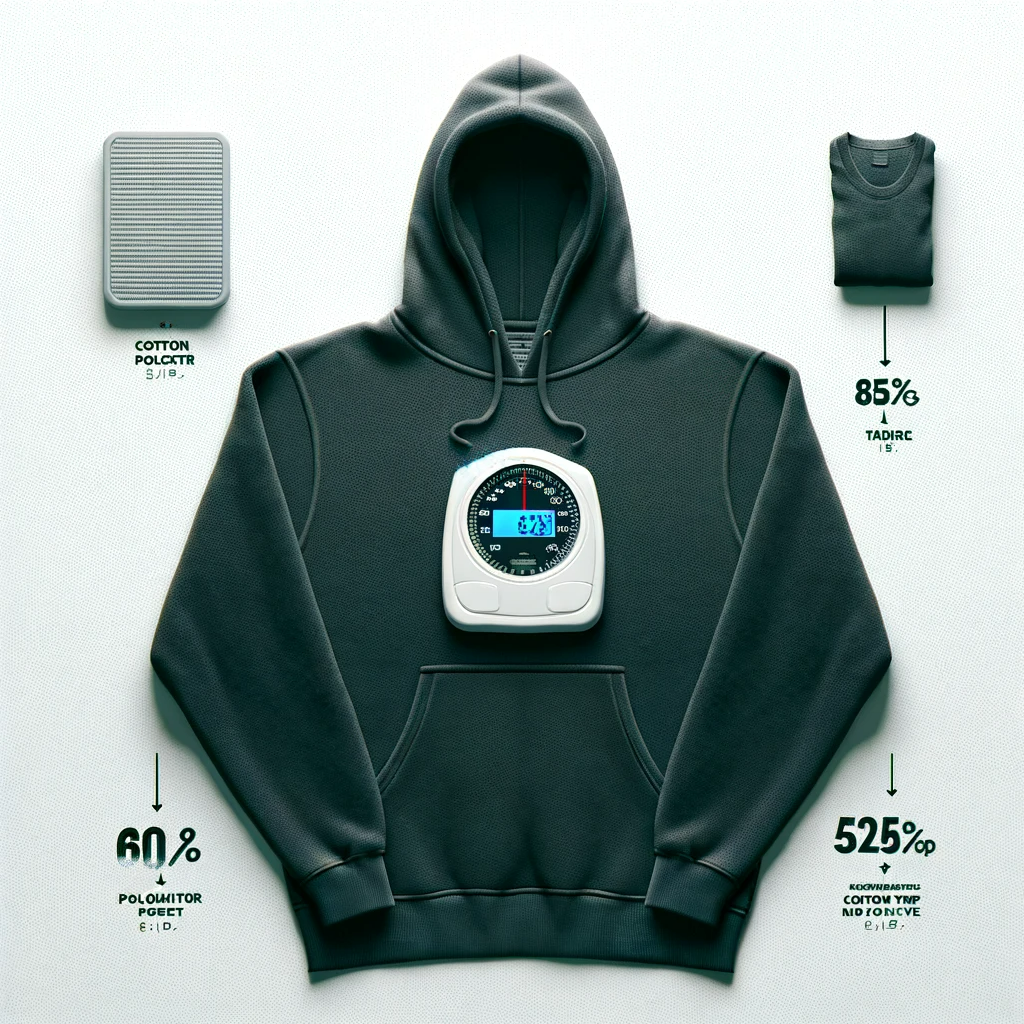Hoodies have become a staple in modern fashion, offering comfort, style, and warmth. Whether you're an individual looking to buy a hoodie or a business owner curious about shipping costs, knowing the weight of a hoodie is crucial. In this comprehensive article, we will delve into the factors that influence hoodie weight, explore different hoodie styles and materials, and provide you with a clear understanding of the weight range you can expect when purchasing a hoodie.
1. Factors Affecting Hoodie Weight
The weight of a hoodie can vary depending on several factors, including the material used, construction techniques, style, and design elements. Each of these factors contributes to the overall weight of the garment.
2. Hoodie Material and Construction
The material and construction of a hoodie play a significant role in determining its weight. Common materials used for hoodies include cotton, polyester, fleece, and blends of these fabrics. Cotton hoodies are generally lighter compared to fleece hoodies, as fleece tends to be denser and provides more insulation.
The construction technique used also affects the weight. Hoodies with thicker fabrics or multiple layers, such as double-knit or Sherpa-lined hoodies, will be heavier than single-layer hoodies. Additionally, features like ribbed cuffs, reinforced seams, and additional pockets can contribute to the weight of the hoodie.
3. Hoodie Styles and Designs
Different hoodie styles and designs can also impact the overall weight. Pullover hoodies, with their simple construction and absence of zippers, tend to be lighter than zip-up hoodies. The presence of a zipper adds additional weight to the hoodie. Furthermore, design elements such as graphics, prints, and embroidery can also slightly increase the weight of the garment.
4. Lightweight Hoodies
Lightweight hoodies are ideal for layering or for those who prefer a lighter garment. They are usually made from thinner materials like lightweight cotton or polyester blends. These hoodies offer breathability and are perfect for mild weather conditions or indoor activities. On average, lightweight hoodies weigh between 8 to 12 ounces (227 to 340 grams).
5. Midweight Hoodies
Midweight hoodies strike a balance between lightness and warmth. They are versatile and suitable for various weather conditions. These hoodies are commonly made from cotton or polyester blends and offer moderate insulation. The weight of midweight hoodies typically ranges from 12 to 16 ounces (340 to 454 grams).
6. Heavyweight Hoodies
Heavyweight hoodies are designed to provide maximum warmth and durability. They are thicker, denser, and often feature additional insulation or lining. Heavyweight hoodies are commonly made from fleece or heavyweight cotton fabrics. The weight of heavyweight hoodies can range from 16 to 24 ounces (454 to 680 grams) or even more, depending on the specific design and material.
7. Comparing Hoodie Weights Across Materials
When comparing hoodie weights across different materials, it's important to consider the density and thickness of the fabric. As mentioned earlier, fleece hoodies tend to be heavier due to their denser construction, while cotton hoodies are generally lighter.
Blended fabrics, such as cotton-polyester blends, offer a balance between weight and performance. These blends combine the lightweight nature of cotton with the durability and moisture-wicking properties of polyester, resulting in hoodies that are lightweight yet functional.
It's important to note that within each material category, the weight can still vary depending on the specific fabric composition and manufacturing processes. So, it's advisable to check the product descriptions or labels for precise information on the weight of a particular hoodie.
8. How to Determine Hoodie Weight Before Purchase
If you're interested in knowing the weight and kind of a hoodie before making a purchase, there are a few ways to find this information. Firstly, check the product description provided by the retailer or manufacturer. Many online stores mention the weight of the hoodie along with other specifications.
Alternatively, you can contact the seller directly and inquire about the weight of the hoodie you're interested in. They should be able to provide you with the necessary details.
Lastly, if you're at a physical store, you can try on the hoodie to get a sense of its weight. While this won't give you an exact measurement, it will help you gauge whether the hoodie feels lightweight, midweight, or heavyweight based on your preferences.
9. Hoodie Weight and Shipping Costs
For businesses or individuals involved in the retail or e-commerce industry, understanding hoodie weight is essential when it comes to shipping costs. Shipping rates are often determined by the weight of the package, along with other factors like dimensions and shipping distance.
By knowing the approximate weight of a hoodie, you can accurately calculate shipping costs and make informed decisions about packaging and shipping methods. This allows for more efficient and cost-effective shipping processes.
Conclusion
In conclusion, the weight of a hoodie can vary depending on several factors, including the material, construction, style, and design elements. Lightweight hoodies typically range from 8 to 12 ounces, midweight hoodies from 12 to 16 ounces, and heavyweight hoodies from 16 to 24 ounces or more.
Factors like fabric composition, thickness, and additional features contribute to the overall weight of the hoodie. Understanding the weight of a hoodie is not only useful for personal preferences but also for businesses involved in shipping and logistics.
Next time you're in the market for a hoodie, take into consideration the weight that suits your needs and enjoy the comfort and style it brings to your wardrobe.

0 comments